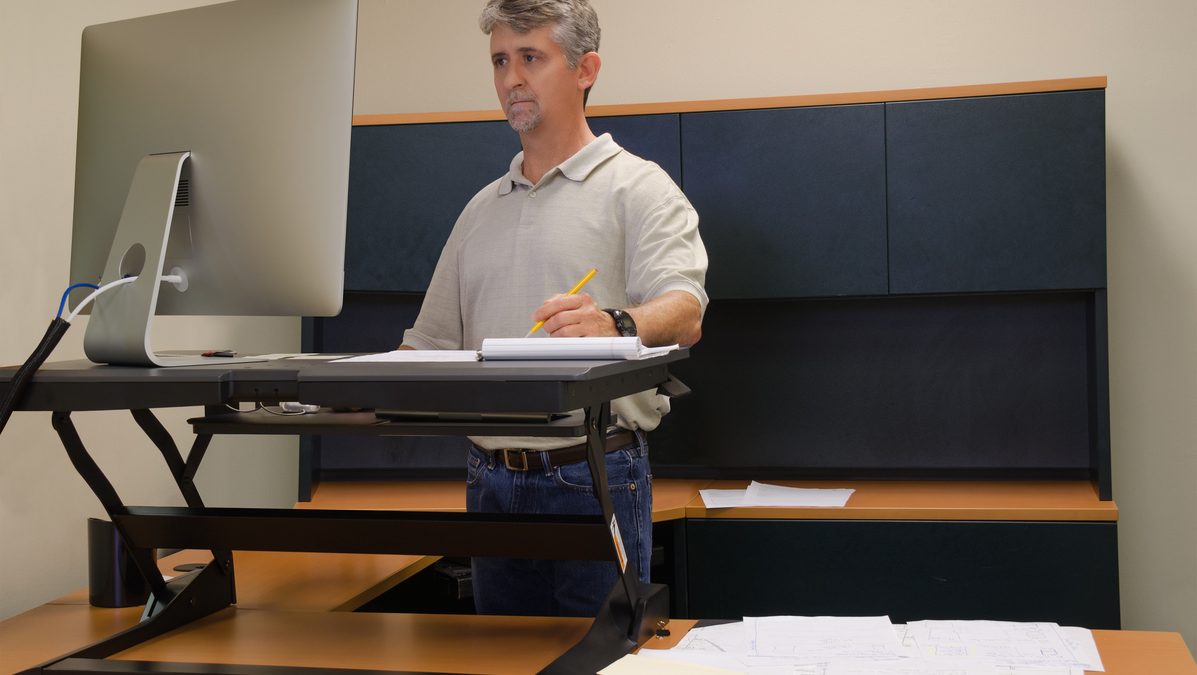
Designing Your Office: Are Standing Desks a Good Idea?
Equipping your employees with standing desks may be trendy, but are the touted benefits the real deal? Are standing desks a good idea?
The standing desk is now a frequently seen and discussed aspect of corporate office design, but many wonder whether or not the benefits are real for the employees who use these desks. According to a study at Harvard Health Publishing, some of the benefits also come with drawbacks that an office must prepare to encounter. For instance, calorie counts for an hour of standing and an hour of sitting are not actually all that different; walking presents a dramatically higher calorie loss, so a standing desk cannot make someone lose weight on its own.
That being said, there are considerations that contribute to standing desk choice include cost, material benefits, and perceived benefits, all of which contribute to a strong office design.
Cost
While the top-of-the-line standing desks may seem expensive, outfitting an office with some form of standing or adjustable desk is actually quite affordable. Standdesk reports that sleek “desk converters” can be placed on top of traditional desks for $100 to $450 dollars, while adjustable electric desks that shift from standing to sitting can be between $480 and $2000. As with all office furniture, it is important to choose what will fit with the rest of the design and what will be a durable and aesthetically pleasing addition.
One important consideration in standing desks is that some are fixed, meaning that the desk will remain at the standing height permanently, and others are structured so as to transition from standing to sitting when the employee wishes. When making a price estimate, make sure to choose which kind of desk will suit the needs of the office.
Material Benefits
The studies show that both standing for many hours at a time and sitting for too long can be bad for health, contributing to higher rates of heart disease and obesity. However, just having a way to transition between sitting and standing is a way to build muscles, get the blood flowing, and promote a dynamic environment in the office. Choosing adjustable standing desks or an open floor plan that allows employees to choose between standing and sitting desks depending on their current needs can create this helpful movement and exercise.
As long as the employees are prepared for the potential for some back or neck pain during the transition process to using a standing desk more, making this option available can result in greater productivity because workers are feeling alert and practicing good posture.
Perceived Benefits
Using standing desks can also contribute to the image of a workspace; having some standing desks gives the impression that the office is on the cutting-edge of technology and workplace productivity. Sites like Business Woman Media are touting many benefits, which contributes to the perception that standing desks are not a fad, but an established positive addition to an office. Because standing desks can contribute health benefits, they also give employees a feeling that they are cared-for and valued members of the team, even if they personally don’t want to use a standing desk! If the corporate culture matches the goals of employee care and cutting-edge design, incorporating standing desks may be a way to make that clear in the office layout.
While standing desks do not make a person healthier definitively on their own, the option to move and avoid staying in the same place all day is a real benefit to employers and employees.
Recent Posts

Want to Reduce Noise in the Office? Improve Your Acoustics

6 Of The Most Common Office Design Mistakes You’ll Want To Avoid

The Benefits and Drawbacks of Open Ceilings

3 MORE Upcoming Interior Design Concepts for the Office Space

Tips From a Commercial Contractor: The 5 Most Common Complaints About Office Design









